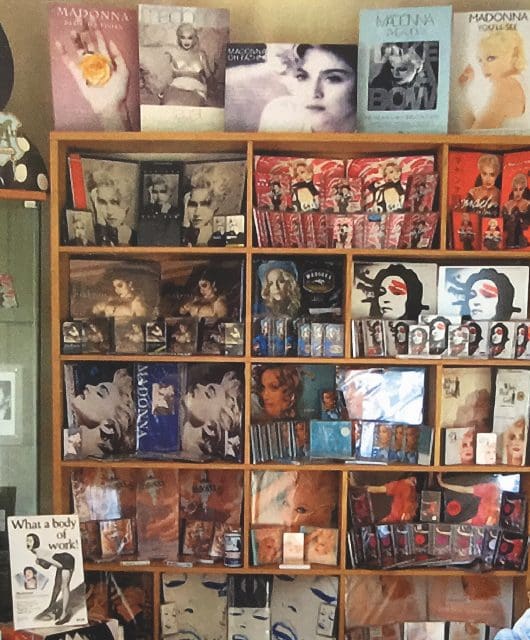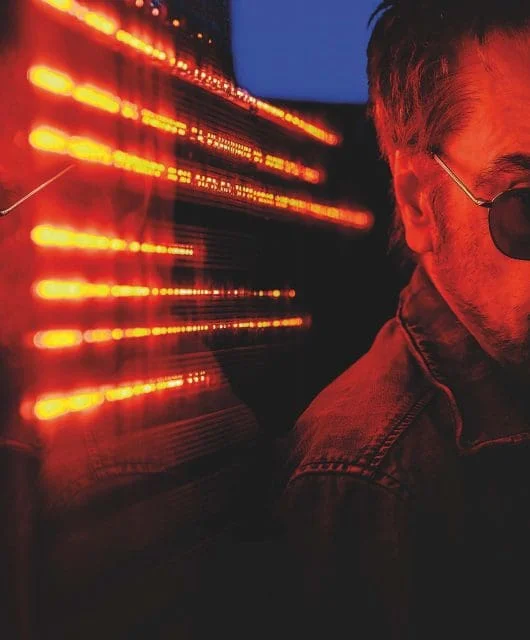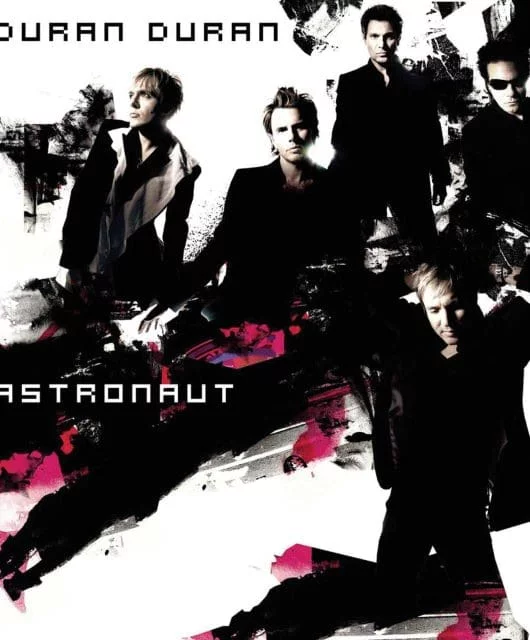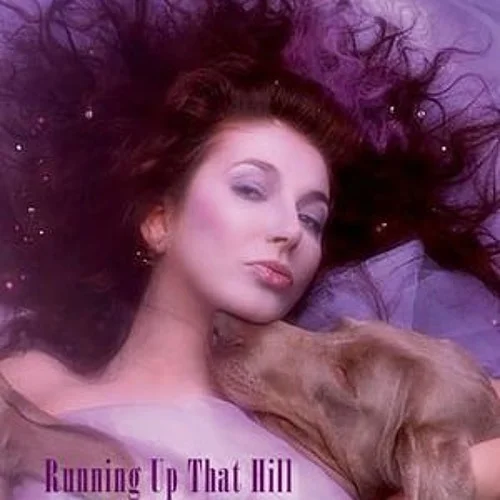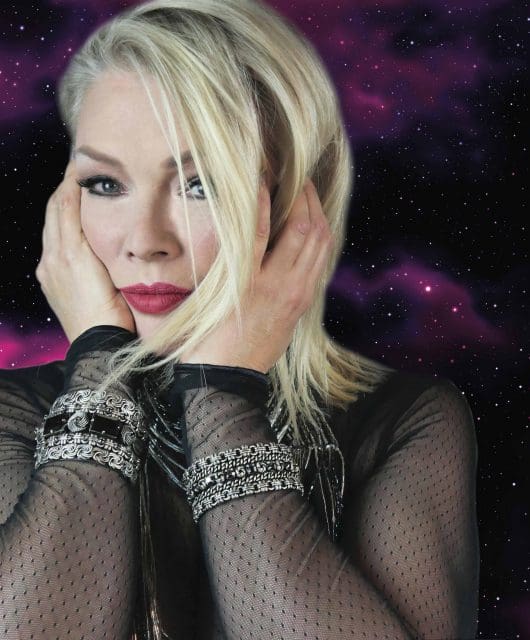Making The La’s
By Gary Walker | October 25, 2021
A timeless classic that inspired a thousand imitators but left its creator claiming it sounds like “a snake with a broken back”, The La’s is a much-mythologised debut album. We tell the story of a man at loggerheads with his past all the time… By Gary Walker
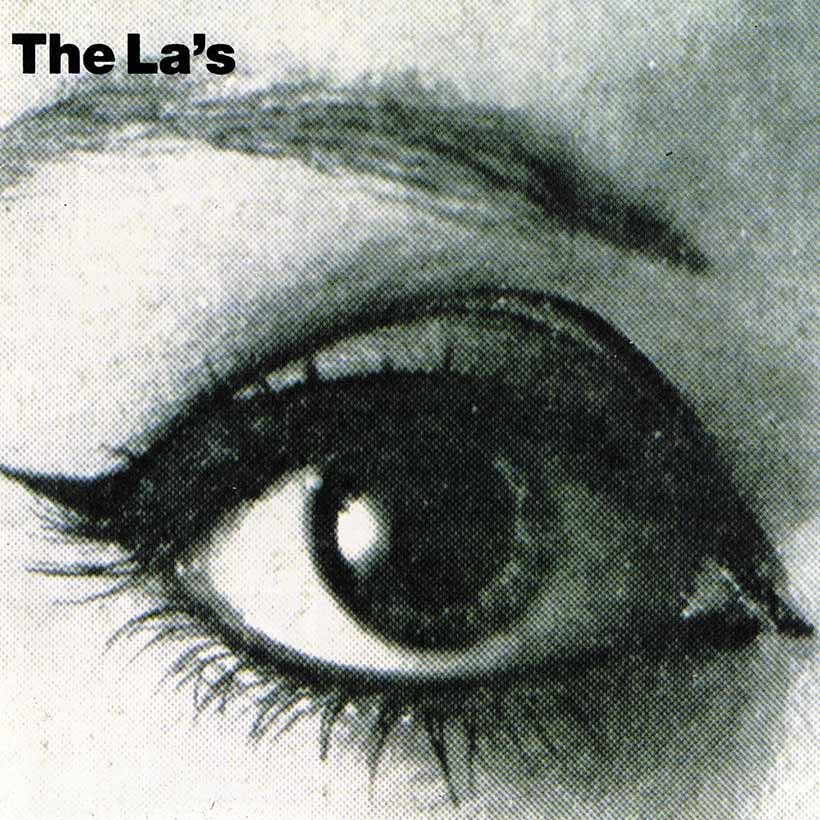
The closer you get to perfection the closer you get to imperfection, simple as.” That was an unusually succinct Lee Mavers in 2005 – 15 years after the release of the first and so far only album by The La’s, neatly encapsulating the story behind one of the most mythologised debuts of all time.
The numbers are as astonishing as the quality of the songwriting on this riddle wrapped in an enigma of a record. Mavers claims that the album burnt through 12 separate sets of studio sessions, nine drummers, seven producers and a good few guitarists.
Despite it all, you could argue Lee Mavers invented Britpop. Steve Lillywhite called him the most talented artist he’d ever worked with and even Noel Gallagher deferred: “There’s only one songwriter in this country who scares me – and that is Lee Mavers.”
It’s a wonder the album came out at all. It was re-recorded at Mavers’ perfectionist behest numerous times, with successive producers trying and failing to realise his vision over three torturous years. By the end, the project had cost a reported £1 million and still wasn’t finished. It never could be. It was no trifling figure for independent label Go! Discs. Mavers said he hated what he heard, but the label had run out of patience and released it anyway. In turn, the band used the album’s promo interviews to tell fans not to buy it.
The La’s at least kept it together long enough to tour their tarnished magnum opus in 1991, but since then Mavers has been a largely reclusive figure, rumours of drug addiction persisting as he’s privately slaved over plans to re-record his precious album.
Sporadic reappearances with varying lineups have coincided with whispers of a vast cache of unreleased songs and breathless talk among fans of a second album. Mavers, though, remains transfixed with the notion of bringing this 1990 debut up to the standards that exist in his head.
Who could he be referring to when he sings on the album’s opening track Son Of A Gun of “a man who’s at loggerheads with his past all the time/ He’s alive and living in purgatory”?
In many ways, The La’s were an anomaly. To paraphrase another flawed genius, Brian Wilson, they just weren’t made for the times they existed in. Aloof from the bug-eyed baggy indie-dance of Happy Mondays, The Stone Roses, Primal Scream et al, and predicting the Merseybeat-pilfering Britpop wave that followed, they were also at odds with the hi-fi production style that characterised many 80s recordings.
Mavers and John Power preferred the naked honesty of largely acoustic guitars, drums and bass; simple pop classicism with its influences clear – the transportive West Coast jangle of The Byrds, hints of the lysergic mysticism of Arthur Lee’s Love, Pink Floyd and The Doors, and an overt appreciation of British Invasion heavyweights The Beatles, The Rolling Stones, The Kinks and The Who.
Read more: Making The 1989’s The Stone Roses
Read more: The Lowdown – Echo & The Bunnymen
The band were formed in 1983 by Liverpool songwriter Mike Badger, with Mavers joining a year later, the pair uniting over a love of Captain Beefheart. A full family tree would take up the remainder of this article, but the highlights are as follows: Bassist John Power and drummer John Timson arrived in 1986, the latter soon replaced by future Oasis member Chris Sharrock.
The band signed to Go! Discs in 1987, by which time Badger, too, had departed, leaving Mavers in charge.
Badger was replaced by guitarist Paul Hemmings, with Mavers’ brother Neil taking over from Sharrock on drums. Keeping up? With the core lineup settled, the band continued writing their debut album in a stable owned by the new guitarist’s mother.
“It was a wonderful time to be in the band,” remembers Hemmings, who went on to join The Lightning Seeds after lasting less than a year on the good ship Mavers, “because Lee had to write material and we had to finish it. There was no deliberating. Every single day there was me, John and Lee in the stables, working.”
Two singles on Go! Discs followed – the Stonesy waltz-time Way Out, produced by Gavin MacKillop, in November 1987, and the initial version of There She Goes, produced by Bob Andrews in October 1988, the latter reaching No.59 on the UK singles chart.
Mavers’ excruciating perfectionism was already causing widespread exasperation, though. Sessions with Smiths producer John Porter, John Leckie, Andrews and Mike Hedges all failed to meet the singer’s approval. Hedges alone claimed to have recorded 35 songs, the master tapes for which later went missing. At one point, Mavers even reportedly knocked on Pete Townshend’s door, hoping to persuade the legendary Who guitarist to take over.
Delicious urban myths surround Evertonian Mavers, with one tale having it that the songwriter vetoed a studio because the console wasn’t coated in the right “60s dust” – another, since debunked, claimed the perma-stoned songwriter carried round a bag of the genuine article that he’d harvested from vintage guitar amplifiers.
“At some point you have to say, ‘That’s it, I’m finished!’ and move on to something else,” says Hedges. “I’ve never been 100 per cent on anything I’ve ever done. I don’t think you ever can be, because how do you measure perfection?”
The band’s door continued to revolve, guitarist Peter “Cammy” Cammell joining the lineup that recorded what would prove to be the finished album in 1989. Steve Lillywhite, who’d produced The Pogues’ Fairytale Of New York and worked with U2, Siouxsie And The Banshees and The Chameleons, was entrusted with seeing the project over the line, a last roll of the dice from Go! Discs. The La’s entered London’s Eden Studios in December 1989, but things inevitably began to unravel.
“I knew the songs were absolute diamonds, but getting them on tape wasn’t so easy,” Lillywhite told MusicRadar. “We’d record six songs that were fantastic, but if there was one thing wrong on the seventh, [Mavers] would be convinced that everything else was terrible and we’d have to start everything all over again.”
While the band felt Lillywhite’s CV was a poor fit for their rootsy authenticity, Mavers’ exacting standards were verging on self sabotage. Songs were being re-recorded over and again, losing their initial energy, and live favourite Callin’ All, at one point set to be the album’s title track, was omitted altogether.
A planned release of Timeless Melody as a single was aborted by Mavers after test pressings had been sent out and Melody Maker had named it “single of the week”.
Go! Discs had had enough and weren’t going to pay for any further sessions. They released Lillywhite’s version of The La’s in October 1990, leaving Mavers disgusted with what he felt was a set of unfinished recordings, using his guide vocals. He told Q: “We walked out on it while we were doing it. We hated it because we weren’t getting our sound across, so we turned our back on it. [Go! Discs] got it together from a load of backing tapes and mixed it up themselves and put it out.”
Mavers immediately distanced himself from the release, describing the album in NME as “like a snake with a broken back” and “the worst, a pile of shit”. The La’s may not be the faultless masterwork Mavers had envisaged and it didn’t trouble the charts, peaking at No.30 in the UK and No.196 in the US, but it was a gross overreaction from its creator.
In The Rough Guide To Rock, Chris Tighe summed up the public mood: “If this was the quality of the demos, the intended final tracks would have been wonderful.”
Read more: Pete Burns – The Final Interview
The La’s is an astonishing album, classic songcraft from arguably the fourth greatest Liverpudlian writer ever to pick up a guitar. In Colin Larkin’s All-Time Top 1000 Albums, he writes,
“It is hard to see why they were dissatisfied. The La’s is a graceful, sweeping and rather grand pop record, utterly charming and filled with a meek beauty.”
The album’s greatest legacy may prove to be the timeless love song it provided in the shape of There She Goes, re-released three weeks after the LP. This time, it reached No.13 in the UK, and remains one of the most evocative, universal guitar-pop songs ever crafted.
Rolling Stone dubbed it the “founding piece of Britpop” and NME placed it 45th in a rundown of the 50 greatest indie anthems of all time. On Spotify, it’s closing in fast on 100 million listens. Robbie Williams and Sixpence None The Richer are among the countless musicians to have a fruitless stab at improving on Mavers’ two versions.
Built on a chiming riff and simple strummed G-D-C chord progression, it’s a song with no verses, just that arrowing heart-rending chorus repeated over and over. The lines “racing through my brain… pulsing through my vein… no one else can heal my pain” have led to speculation it’s about heroin, but Mavers and more than one member of the band have dismissed this as wide of the mark.
“I thought it would be big, a lot bigger than it was, but then forgotten like a lot of pop songs,” said Byrne. “In retrospect, the opposite happened.”
Despite the success of its lead single, and the equally stellar Timeless Melody and sprawling closer Looking Glass, the album’s tortured recording process had taken its toll on the band and they disappeared from the radar after touring it.
Rumours persisted that Mavers was deep into drug addiction and had told Go! Discs they wouldn’t get another note out of him until they funded a re-recording of the album; it was even suggested that label executives had locked the band on a boat and refused to let them out until a second album was written. Powers was done and left to form Britpop middleweights Cast, performing a pretty lukewarm impression of his old band in the process.
Still, the internet remains ablaze with speculation from Mavers’ hungry disciples about what might have been. Lillywhite recalled the songwriter demoing a tune called Fishing Net during the sessions, and said it was among the best songs he’d ever heard. He asked if it could be added to The La’s, but Mavers shot him down, replying, “No, that’s for the second album”.
A pair of appearances in December 1994 – at a Paul Weller gig in London and a support slot for Oasis at the Brighton Centre – were followed by dates with Dodgy.
Next came a surprise April 1995 interview with NME’s Paul Moody at the band’s Liverpool rehearsal room. An animated Mavers and his band played extracts of new songs live for Moody, before appearing to offer hope of a comeback in a barrage of quasi-religious platitudes. “We needed a rest because of what we’d found. Now we’ve rested and we’re headed back, because it’s calling,” Mavers asserted. “Before it was all nonsense, now it’s beginning to make one sense…”
Following a reunion with Badger and Hemmings, who’d formed their Viper record label, two albums of early demos were released in 1999 and 2001, and the three again discussed reconstructing The La’s, with Hemmings at the controls. But again Mavers proved the immovable object.
“There’s no rhyme or reason to it,” Hemmings explained with the patience of a saint. “I mean, even a simple matter of listening to the demos: Lee would say, ‘That’s the wrong demo tape’. Well, it’s actually the master demo tape. ‘Yeah, but I prefer this version’. OK, so you use that version. ‘But it’s being played through the wrong cassette deck’. OK, we’ll get this cassette deck. ‘Yeah, but it’s being recorded through the wrong mic’. OK, you get this mic. ‘But that’s the wrong coloured lead’. OK, you get this coloured lead… You go on and on and on ‘til nothing happens.”
Fan turned biographer Matthew Macefield tracked down Mavers at his home in Liverpool when writing his book, In Search Of The La’s. The songwriter again insisted he may one day re-record the album and could self-release new material on the internet to avoid involvement with record labels, before playing one of the much-discussed new songs, Raindance. It was, said Macefield, “one of the best that I have ever heard”.
After a lineup of the band including John Power played a handful of festivals, including Glastonbury in 2005, speculation again began to mount, Power telling a journalist in 2006 that Mavers was “tinkering with something that’s majestic”. That year also saw the release of The La’s: BBC In Session, an excellent collection that perhaps sounds closer to Mavers’ elusive vision.
Hemmings, one of the people who knows Mavers best, says depictions of him as a burnt-out tortured genius in the same vein as Syd Barrett or Brian Wilson are wide of the mark, Mavers now a quiet family man living in a Liverpool suburb. However, Hemmings remains pessimistic about the chances of ever hearing new material. “Who knows. But I would probably say don’t hold your breath. I don’t think it’s ever going to happen. Personally, I think that’s your lot.”
A 1989 rehearsal tape featuring unreleased material and known among La’s fans as The Kitchen Tape, emerged in 2006, provoking a typically dismissive response from Mavers, who called the demos “a load of fucking garbage”.
Next, a comprehensive deluxe edition of the album was released in 2008, featuring the original Mike Hedges mix, and fans even launched a petition on the Change.org website pleading with their hero to record new material and tour again. It’s now 30 years since The La’s, and at the age of 58, one of music’s great enigmas still has only a single album to his name. Will there be more timeless melodies? We’re still waiting.
The Songs
Son Of A Gun
A simple opening salvo, which centres on only three chords and falls just shy of the two-minute mark. It evidences Mavers’ adroit and evocative storytelling, his acoustic guitar playing typically crisp and confident. Whether or not it’s autobiographical we don’t know, but it’s a tremendous piece of writing regardless and feels a prescient description of Mavers’ unfulfilled talents: “If you want, I’ll sell you a life story/ About a man who’s at loggerheads with his past all the time/ He’s alive and living in purgatory/ All he’s doing is rooming up in hotels and scooping up lots of wine”. The version from Liz Kershaw’s show on the 2016 BBC In Session compilation eclipses the album take.
I Can’t Sleep
There’s a little of The Who’s I Can’t Explain about the rhythm guitar progression on the album’s up-tempo, rocking second track. After the lacerating, trebly electric guitar intro, Mavers sings of a “big black car”, “train” and “cloud”, perhaps referencing depression, before confessing in the chorus, “I’m so sad about/ Not so glad about/ I’m so mad, I can’t sleep tonight”. A Lennon-esque scream ushers in the briefest of guitar solos and Mavers and Powers’ voices meld together beautifully. Check out the deluxe edition of the album for a version recorded on a Gary Crowley GLR session, with an echoey Mavers sounding as if he’s singing his vocals in the bathroom he references in the lyrics.
Timeless Melody
Rarely has a song’s title been more apposite. This has a little of Lillywhite’s stamp in its spacious quality, the chiming intro briefly incongruous and reminiscent of The Edge’s delay-bathed guitar playing. From that moment on, it’s a classic piece of wistful pop music. The verses are Mavers’ salute to the transportive powers of music, the choruses wonderfully mythical Byrdsy psychedelia, while its galloping instrumental mid-section is one of the highlights of the Lillywhite sessions. Pearl Jam covered the song several times on their Binaural tour in 2000, Eddie Vedder joined on vocals by Gaz Coombes from Supergrass.
Liberty Ship
Almost a British Invasion pastiche, but containing more intriguingly opaque, mysterious writing from an inspired Mavers. “I am the toiler, the old ship slave/ I stoke the fire that keeps you brave,” he sings. The Coral and Gomez were presumably listening closely and making notes. The strummed acoustic guitar and bassline are elementary throughout, cycling around C and G chords in the verses and ascending in the chorus, before a sweet little acoustic solo and a dreamy outro, Mavers repeating mesmerically, “Sail away on the airwaves/ Sail away on an ocean breeze”, with subtle shards of atmospheric guitar noise flitting around the fringes of the mix.
There She Goes
Taking its influence from The Velvet Underground’s There She Goes Again, one of the most stirring pop songs ever written is remarkable musically for having no verses, just that starry-eyed romantic chorus, and a bridge. Originally released as a single, produced by Bob Andrews in 1988, it was re-recorded by Steve Lillywhite, this time in G Major and re-released three weeks after the album, reaching No.13 in the charts. Robbie Williams’ spirited if clumsy take at Glastonbury 1998 added little. Of the many urban myths surrounding The La’s, probably the most often repeated is that There She Goes is about heroin, denied repeatedly by Mavers and other members of the band. Who cares what it’s about, anyway: “There she goes again/ Racing through my brain/ Pulsing through my veins/ No one else can heal my pain” is one of the best bittersweet pop lyrics of all time.
Doledrum
An anthem to escaping the drudgery of a monotonous 9-5 existence, Doledrum’s swinging rhythm and woodblock percussion recall The Rolling Stones’ The Last Time. John Power’s woozy “ahhs” and “Don’t go down” backing vocals add to the groovy 60s vibes as Mavers sings: “If you know what’s good for you, then you know what you can do/ Just get up a fuss and shout/ Get up a fuss, get out… of Doledrum”. The infectious riff that runs through the verses is played on an acoustic guitar on the album cut, but give the Mike Hedges and John Porter mixes from the deluxe edition a spin to hear it on an electric.
Feelin’
One minute 45 seconds of 60s-referencing pop perfection. With a guitar hook that tips its hat to The Beatles’ I Feel Fine, Mavers gets mystical, singing, “I get the feeling, I am responding to a call/ I am receiving, to give you this meaning/ Thank God for that feeling, I could not ask for anymore”. The song was released as the final single from the album in February 1991, narrowly missing out on a place in the UK Top 40, peaking at No.43.
Way Out
The band’s debut single, initially released in November 1987 and originally produced by Gavin MacKillop. It’s a swoonsome waltz-time wonder that suggests an appreciation of Johnny Marr’s guitar playing. Ostensibly, it documents the dissolution of a faltering relationship as Mavers sings, “Give me one last kiss before I walk out of this/ Give me some money ‘cause I’m right in a hurry”. Perhaps more than any other song in the band’s catalogue, Way Out could be said to have provided John Power with a blueprint for his later band, Cast. The version recorded for Nicky Campbell’s BBC show in March 1989 is an absolute beauty.
I.O.U.
Another simple two-minute song that fades in with a basic A-G-D chord progression and a propulsive groove. Reminiscent of early Stones singles, it changes key into a bridge section in which Mavers piles up the rhymes: “On the farm, linking you arm in arm/ There’s no harm, in greasing your neighbour’s palm”. Aside from a questionable coupling of “knowledge” with “porridge” in the second verse, it’s a fine piece of writing. While it’s not radically different from the album incarnation, many fans prefer the Mike Hedges version.
Freedom Song
“All this world seems bent upon contemplating Babylon/ Fate is sealed inside a bomb/ Where has all the freedom gone?” sings Mavers forebodingly on this dark-hued Brechtian shanty that was likely influenced by his love of Captain Beefheart. Did Noel Gallagher lift the intro for The Importance Of Being Idle on 2005’s Don’t Believe The Truth? Definitely, maybe. Ask La’s fans which is the definitive version and it’s a toss-up between the Mike Hedges take and the BBC session.
Failure
This time, the overriding reference point is The Who on a rollicking heavy-rock song that sounds a lot like it inspired early Oasis demos. Mavers’ unintelligible intro snarl sounds uncannily like Liam Gallagher. With its growling distorted guitars, howl of feedback and serrated R&B vocals, lyrically it’s one of the most interesting songs on the album, as a doom-laden Mavers voices his fears: “You’re wrapped up in chains/ So you wait in your room, bound to the doom/ To talk with the skeleton in the closet”.
Looking Glass
Alongside There She Goes and Timeless Melody, Looking Glass elevates Lee Mavers to the highest echelon of songwriters. “Tell me where I’m going, tell me where I’m bound/ Tear the pages open, turn the world around,” he sings enigmatically on the album’s epic seven-minute closer. Building from a red herring jaunty acoustic guitar riff, Mavers shifts into chords in the key of A, his acoustic guitar tuned down half a step. The band speed up to a frenetic conclusion that evokes The Velvet Underground’s Heroin and Spiritualized’s Ladies And Gentlemen We Are Floating In Space album, with Mavers repeating ever more urgently, “The change is cast”. A quite sublime piece of songwriting.
Want more from Classic Pop? Become a subscriber. Click here for more details.


